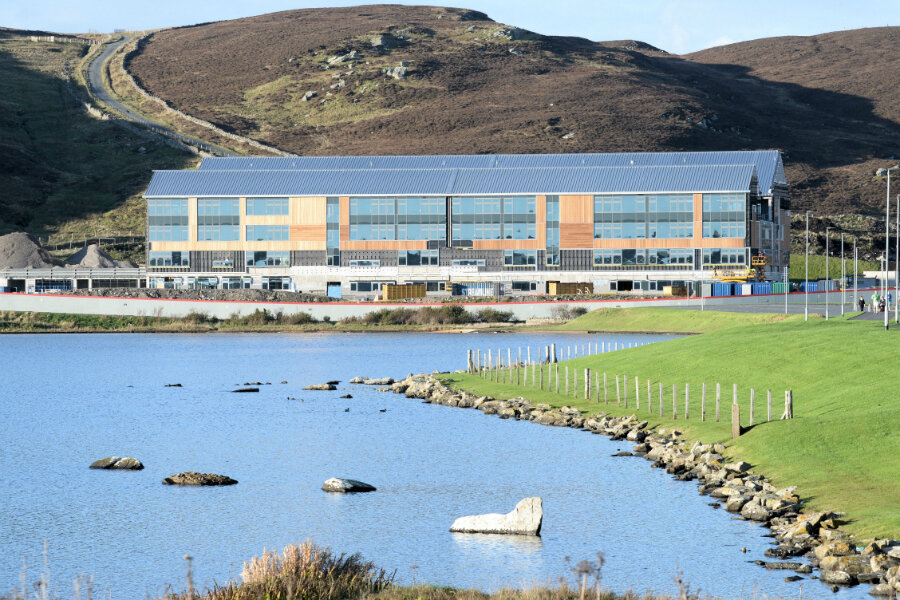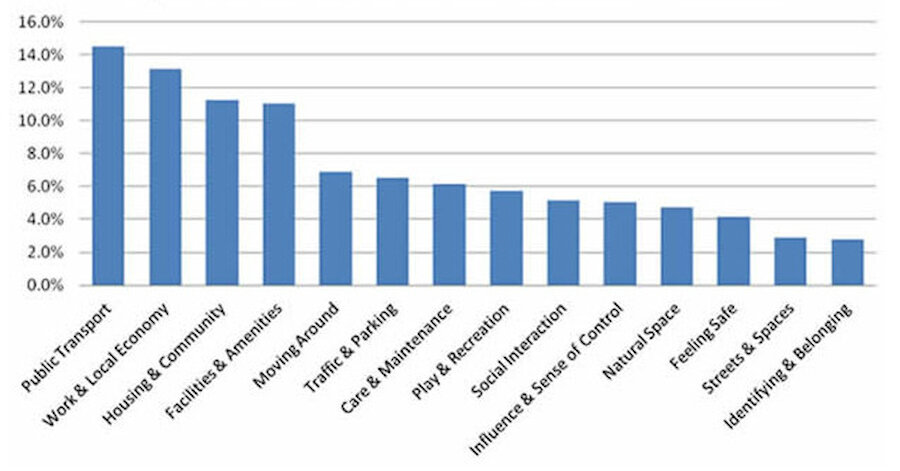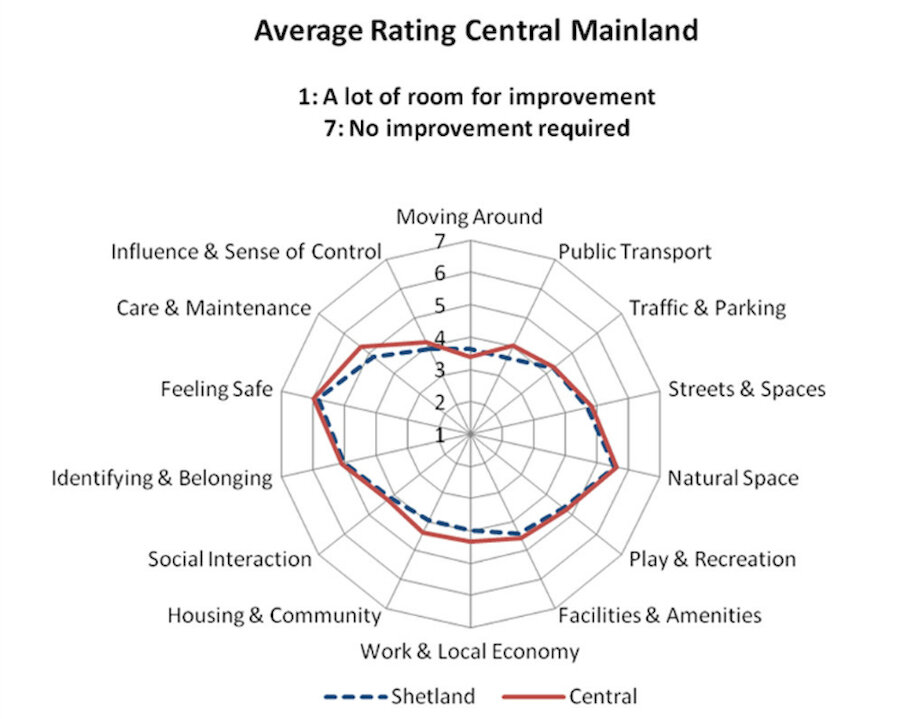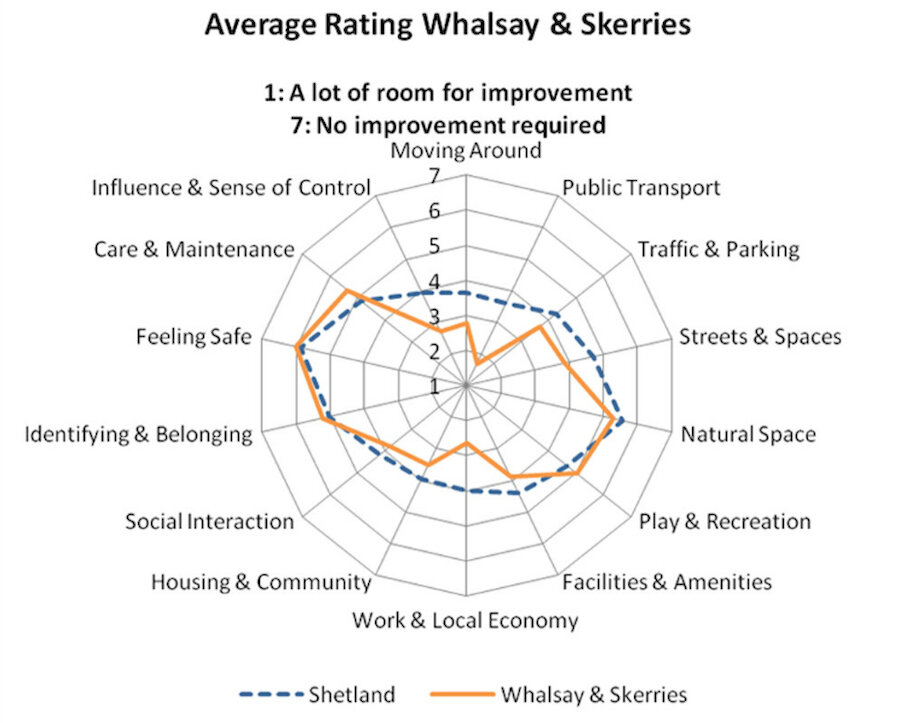A new tool devised by Architecture and Design Scotland, the Scottish Government and NHS Scotland allows local communities to assess how their place feels and how well it works. The Place Standard, as it’s called, can be used to evaluate the quality of life at any scale, from a hamlet to a nation. Shetland Islands Council has recently used it right across Shetland and it is also being used in other ways, at a smaller scale.
The Place Standard...can be used to evaluate the quality of life at any scale
Earlier this year, the Council launched the Place Standard consultation to gather views on how people feel about where they live. The initial results have recently been published and are presented as ‘spider diagrams’, offering summary data from across Shetland on each of 14 themes included in the survey.
The consultation ran for four weeks in June and July, with responses from 939 people from all areas of Shetland and 4,840 individual comments. Detailed analysis of the data is now under way, ahead of a full report that will be published in early 2017. This report will also include feedback from follow-up community forums that will be held across Shetland in the coming weeks.
...community forums...will be held across Shetland in the coming weeks...
The Place Standard approach is considered innovative by focusing on how physical and social environments affect quality of life. The consultation included fourteen themes such as transport, housing and economy, to assess the quality of localities in Shetland and to gather views on what people think needs to be improved in their area. People were asked to score each factor on a scale between 1 (lots of room for improvement) and 7 (little or no room for improvement).
As the diagram below indicates, the initial findings suggest that the four factors on which people feel action is most needed are public transport; work and the local economy; housing and community; and facilities and amenities. The four factors on which people were most satisfied were identifying and belonging; streets and spaces; feeling safe; and natural space.
The picture that emerged was remarkably consistent across Shetland, though there were some, mostly small, variations. For example, people in Whalsay and Skerries and the North Isles were less satisfied than the Shetland average with public transport, moving around and work and local economy. People in the town of Lerwick and the island of Bressay were slightly less content with their access to natural space than people living in rural areas. The charts below show the Shetland-wide score and, below that, the results from two other areas, the Central Mainland and Whalsay and Skerries. In each case, both the district and Shetland-wide scores are shown on the charts.
The picture that emerged was remarkably consistent
Councillor Alastair Cooper, Chairman of the Development Committee, said “Almost a thousand people responded to this survey which is very positive. We’re now looking at all the information which has been gathered, which will help to inform future Council policy in many areas, such as housing, transport, planning and economic development. This feedback from communities is really important evidence for us and where needed, it will also help with our requests for external funding.”
The summary data can be found on Shetland Islands Council’s web page.
This feedback from communities is really important evidence







